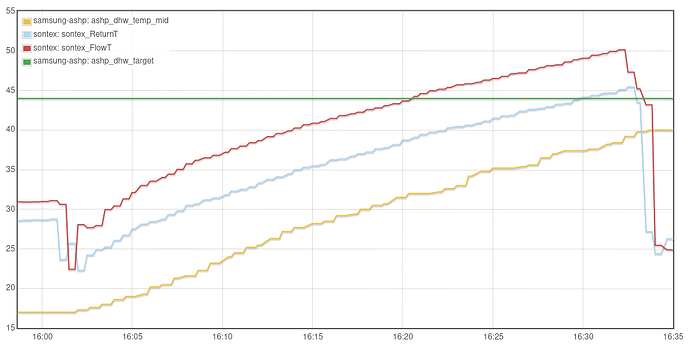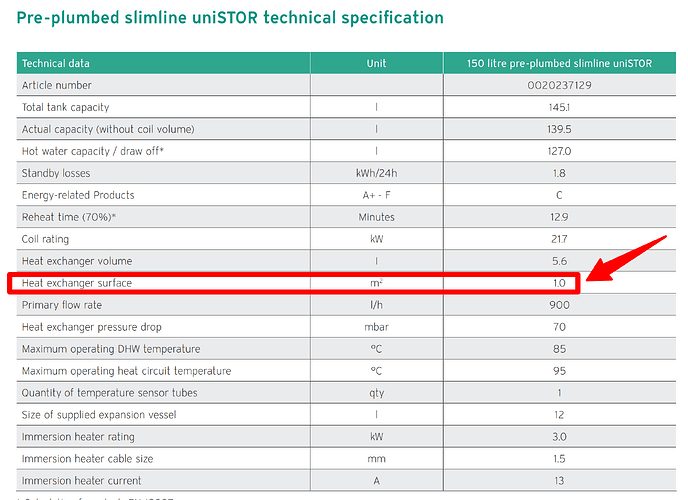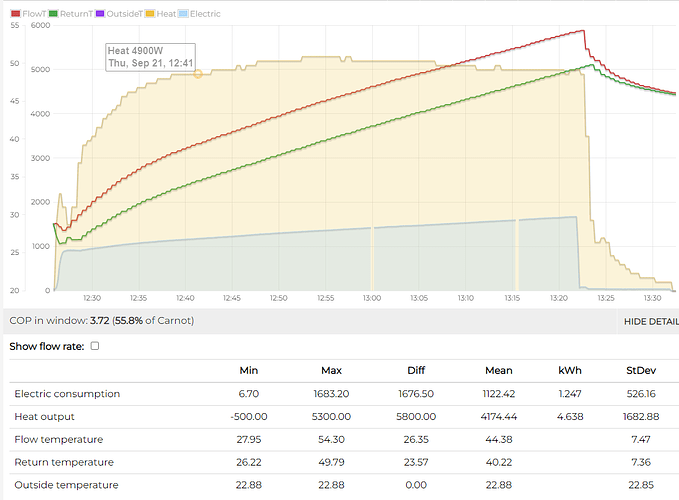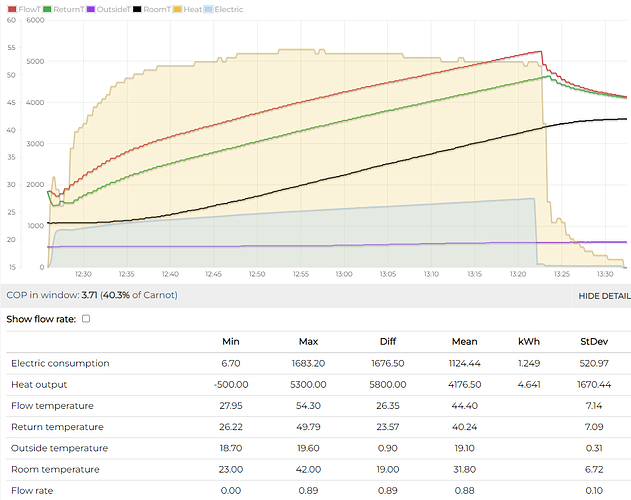As detailed in my own hot water adventure thread.
I’ve become somewhat obsessed trying to get the best out of my own Vaillant and Mixergy setup and how that compares to other systems on heatpumpmonitor.org
And constantly moaning that my Mixergy plate based setup isn’t as good as the coil based cylinders many of you own. ![]()
When comparing a single hot water run on my system to that of other folk it’s almost impossible to do meaningful comparisons due to different outside temperatures, hot water target temps, Eco modes, flow rates, plates/coils etc all leading to different COP for the single runs.
So i’m wondering if using ‘simulate heat out using carnot COP’ is a better way of comparing systems and hot water runs?

Here’s a chart of data I pulled together from multiple random hot water runs from some of the top of the 30 day charts from heatpumpmonitor.org
Carnot %, 30 day SCOP, COP when running
- Glyn: Carnot 51% (30 day SCOP 4.0, running COP 4.6)
- Trystan: Carnot 50% (30 day SCOP 3.7, running 4.7)
- Heat Geek: Carnot 49% (30 day SCOP 4.5, running 5.5)
- Custom Renewables (Oxford): Carnot 50% (30 day SCOP 3.5, running 3.8)
- Custom Renewables (Stratford): Carnot 45% (30 day SCOP 4.2, running 4.2)
- My Mixergy: Carnot 41% (30 day SCOP 3.1, running 3.4)
So there is some correlation there?
Obviously COP can be different due to higher target temp.
Custom Renewables Oxford likes 65C water for example, hence lower COP, but it is ‘still’ 3.6 cos his Carnot efficiency is 52% on this one.
Is 50% Carnot what everyone “should” be achieving / striving for on hot water runs?
If they can’t then it’s some sort of physical or setup problem/limitation with their system?
I’m curious what others think. What’s your hot water carnot % efficiency look like?
And would you plan to improve things?
Finally, when looking at the top performers again
- Glyn: Carnot 51% (30 day SCOP 4.0, running COP 4.6)
- Trystan: Carnot 50% (30 day SCOP 3.7, running 4.7)
- Heat Geek: Carnot 49% (30 day SCOP 4.5, running 5.5)
- Custom Renewables (Oxford): Carnot 50% (30 day SCOP 3.5, running 3.8)
Is the fancy dual coil on Adam Heat Geek cylinder really making all the difference in performance here? Compared to ‘standard’ coils in the other 3?
Details of his design in his video from 7:53 onwards.











